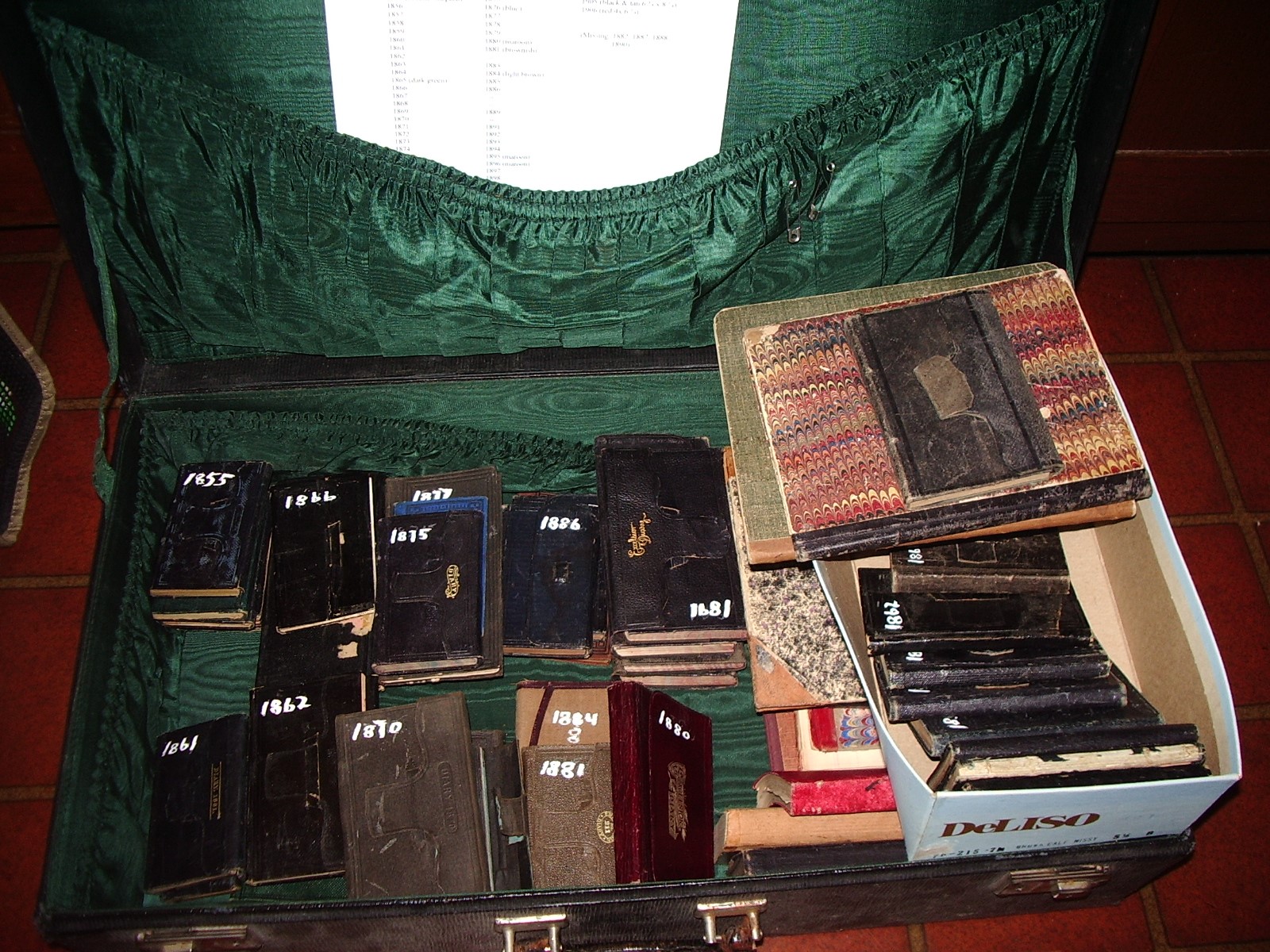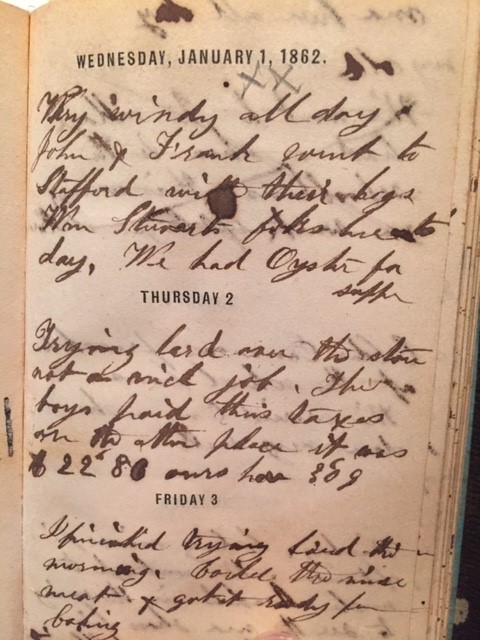When I first started reading the “Xerox” copies of Lucile Carr’s hand-written transcriptions, it was fairly easy to transcribe them into Microsoft Word, which I was familiar with and so the best choice for me to use in 2003. There were many unreadable entries and pages in the copies, however, and those were set aside in a to-be-dealt-with-later-stack. It took several years to transcribe and footnote all 55 years of Lucile’s transcriptions in this way.
Around 2008 I printed out the first three years’ worth of my Microsoft Word transcriptions of the “Xerox” copies of Lucile’s hand-written transcriptions of the original diaries. I put them in three-ring notebooks and put them into a box that would fit all three of the required copies. The plan was to ship them off to a publisher I had previously contacted for their review. Ever since I started this project, I have found the months of January through April to be the most productive time to work exclusively on it, given our harsh winters in western New York. But for some unknown reason, that April, I let the box sit in my computer room waiting for I-don’t-know-what. Maybe confidence.
Then one day, I quite accidentally discovered where the original diaries were!
If I could just take a look at the pages in the original diaries for the to-be-dealt-with-later-stack, then I would have a more complete transcription. It took a while, letter writing, family stuff, traveling, etc., but finally I laid eyes on those little gems. At that moment, it was like I was a kid again on Christmas morning when I first saw presents piled high under a previously barren tree.

And better yet the caretaker of the diaries very generously offered to let me borrow a few of them rather than transcribe on the spot. I was looking forward to getting started on the next step - take the first unreadable page off the top of the to-be-dealt-with-later-stack, then look it up in the “real” diary and update my transcription.
The first problem I ran into was the cursive writing used in the nineteenth century. It was downright difficult to decipher. One diary was only 2 ¼”x 3 ¼” – for a whole year’s worth of entries! Some of the diary entries I needed further clarification on, only to find that I could barely decipher what was written. Some pages were almost too light to read, some had inkblots. I took a picture of the difficult diary pages, then zoomed in on them 400% for closer inspection. Eventually, however, I accomplished my goal of transcribing the unreadable “Xerox” copies.
The second problem I ran into - I noticed something I was not expecting. The transcribed entries did not match the real diary entries! What? Some of the entries were reworded with corrected English, spelling, and punctuation. Some days were left out. Some people were left out. This was not an error on Lucile’s part, it was an error on my assuming part. And it suddenly struck me that I had to update my digital version to match the original diary entries, spelling errors and all. I wanted my finished version to exactly match what was written in those tiny little journals.
Now looking back on it a dozen years later, I am amazed I stuck with it. But I just could not ship that box to the publisher, it was incomplete.

